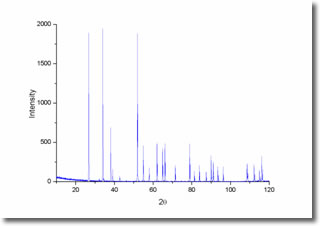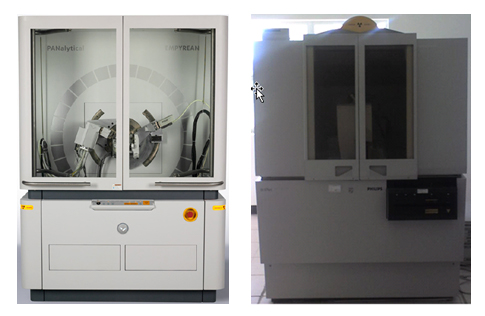



INTRODUCTION
The X-ray diffraction technique is a non-destructive analytical method and one of the most important when dealing with crystalline materials characterization, such as metals, ceramics, polymers, intermetallics, minerals, organic or inorganic compounds.

X-ray diffraction technique can be used to identify crystalline phases within the sample, ranging from starting raw materials to finished products. This technique has been successfully used for decades to provide precise information about internal structure of materials. The quality of the diffraction pattern is commonly limited by the nature and energy of the radiation available, by the instrument's resolution and by the physical and chemical conditions of the samples. Since many materials can only be made in polycrystalline form, the X-ray diffraction technique becomes the only realistic option to identify the crystalline structure of these materials.
CIMAV Monterrey X-ray Laboratory has the following diffractometers:
Panalytical Empyream Philips X'Pert MPD
For phase crystalline identification we have the Match and X'Pert High Score Plus software and both the 124,335 compounds ICSD (Inorganic Crystal Structure Database) and the 230,346 compounds PDF-2 from ICDD crystallographic databases.
Features of samples to be characterized
- Powder samples: Particle size should be no grater than 0.1 mm and highly homogenized.
- Solid samples (metals or minerals) can be analyzed if and only if the sample shows a flat surface; preferably the face to be characterized should be polished.
- For thin film analysis, samples must be completely flat
X-ray diffraction can be used to characterize any solid material. It is widely used in materials such as:
- Inorganics
- Superconductors
- Organics
- Cements
- Minerals
- Corrosive materials
- Polymers
- Zeolite
- Detergents
- Pigments
- Pharmaceutical products
- Explosives
- Ionic conductors
- Metals and metal alloys
- Forensic materials
- Ceramics
External services offered by the Laboratory:
- Qualitative determination of phases.
- Quantitative determination of phases.




